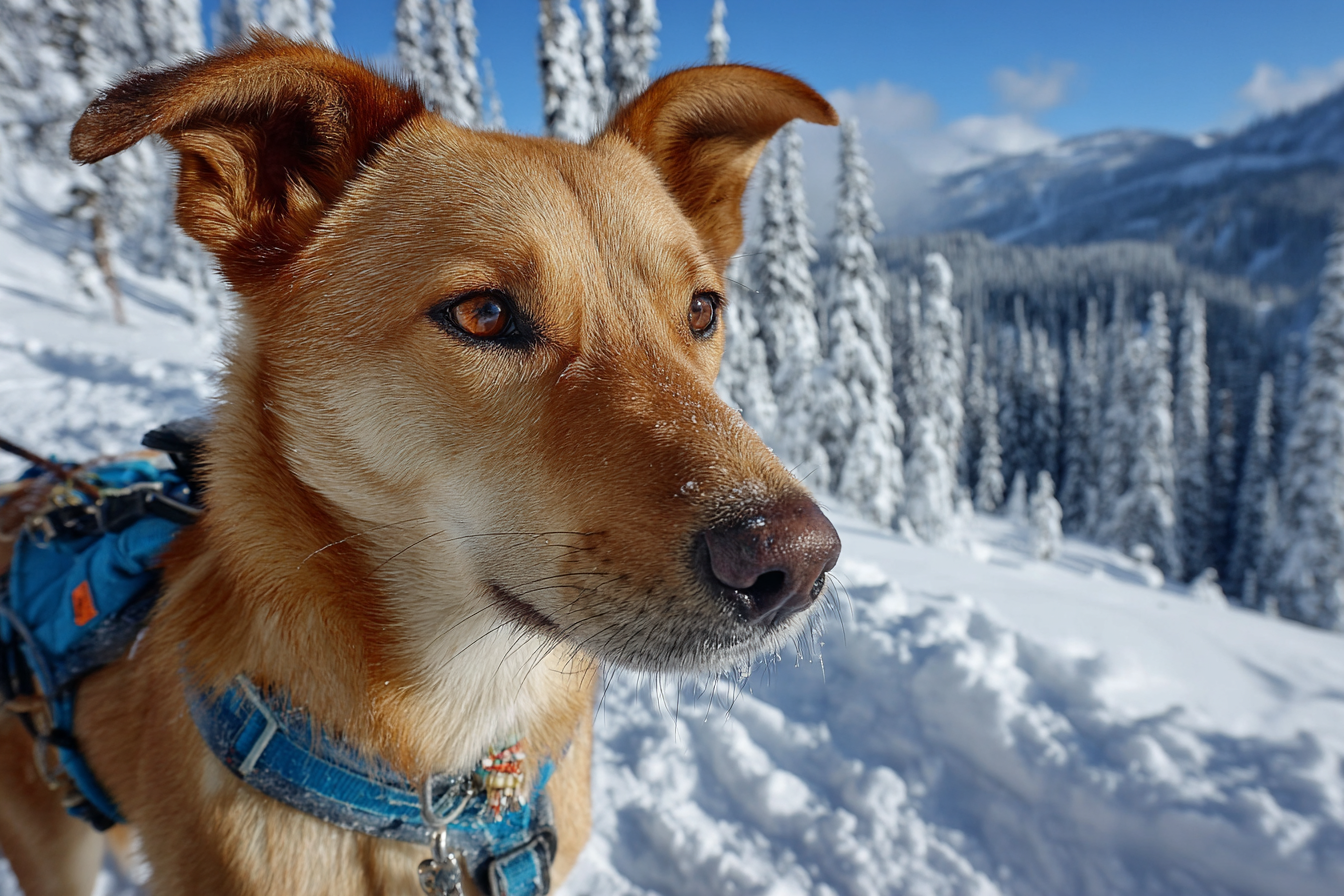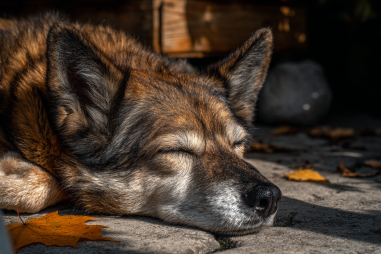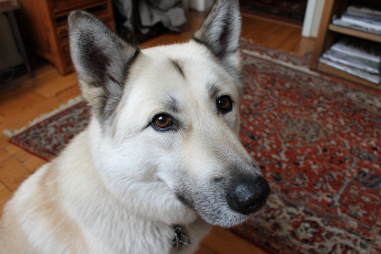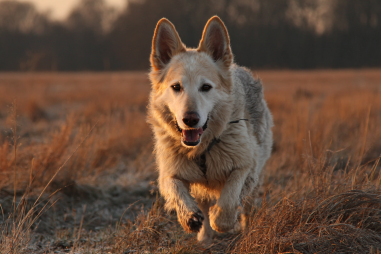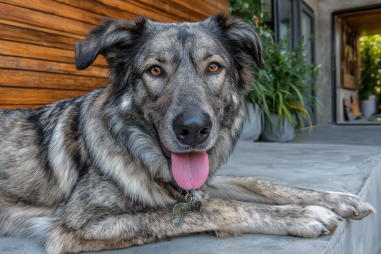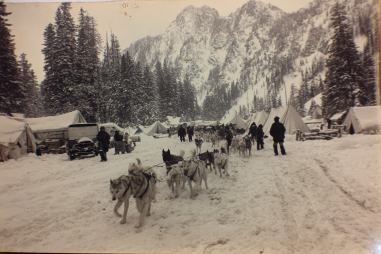The Chinook dog is a remarkable breed with a rich history rooted in sled dog work. Originally bred to navigate the challenging terrain and extreme weather conditions of New England, Chinooks have proven to be sturdy, reliable, and hardworking sled dogs. Today, while not as common as some other sledding breeds, these dogs continue to make their mark in sled dog teams, showcasing impressive endurance and strength. Let’s dive into the fascinating story of Chinooks as working sled dogs, their unique physical and mental traits, and how their legacy is preserved through modern sled dog sports and work.
History of Chinooks in Sled Dog Work
The Chinook breed originated in the early 1900s, created by Arthur Treadwell Walden on his property in New Hampshire. Walden aimed to develop a sled dog breed that combined speed, strength, and endurance to pull sleds across the harsh, snowy conditions of the northeastern United States. The Chinook traces its lineage to a male mastiff-husky mix named Chinook, which was the foundation sire for the breed.
Unlike other sled dog breeds that come from Arctic or sub-Arctic regions, Chinooks were bred with a focus on versatility and temperament as much as physical ability. This made them excellent not only as working sled dogs but also as family companions. Over the years, Chinooks have been used in various sled dog roles, including freight hauling, search and rescue missions, and recreational sledding. Their adaptability and willingness to work have earned them a respected place in the sled dog world.
Physical Traits That Aid Sledding
The Chinook’s physical characteristics are perfectly suited for sled work. Medium to large in size, these dogs typically weigh between 50 to 90 pounds, with a muscular yet agile build that allows for both endurance and speed. Their deep chest provides ample lung capacity, while their strong legs and feet enable them to traverse snowy and icy terrain with ease.
One of the standout features of the Chinook is their double coat. This thick, weather-resistant fur protects them from biting cold and blustery winds, helping maintain their body temperature during long runs in freezing conditions. Additionally, their tails are bushy and often curled over the back, which can be used to shield their noses when they curl up to rest in the snow.
Chinooks also have a friendly and intelligent expression, complemented by expressive eyes and erect ears that are attuned to environmental cues, helping them respond well to commands while on the trail. Their physical and mental makeup makes them ideal partners in the demanding field of sled dog work.
Training and Conditioning for Sled Work
To perform optimally as sled dogs, Chinooks require proper training and conditioning from an early age. This process typically begins with basic obedience and socialization, ensuring the dogs are well-mannered and responsive to their musher’s instructions. Gradually, specific sledding skills are introduced, including learning to run in harness, follow commands such as “gee” (turn right) and “haw” (turn left), and pulling weight in a controlled and steady manner.
Conditioning is crucial since sledding is a physically demanding activity involving endurance, strength, and stamina. Trainers work to build a Chinook’s cardiovascular health and muscle tone through incremental mileage increases and targeted exercises. Nutrition also plays a critical role—high-quality, energy-rich diets tailored to active working dogs fuel their exertion and recovery.
Additionally, mental conditioning is equally important. Chinooks are known for their intelligence and eagerness to please, which makes them quick learners, but consistent training and positive reinforcement help maintain motivation and focus. Regular check-ins with veterinarians ensure that the dogs remain healthy and free from injuries associated with intense physical labor.
Modern-Day Sled Dog Competitions and Chinooks
In today’s sled dog sport scene, Chinooks may not be as dominant as Alaskan Huskies or Siberian Huskies, but they still hold their own in various competitions. Due to their versatile nature, Chinooks are often seen in mid-distance and recreational sledding events rather than ultra-distance races.
Many mushers value Chinooks for their steady pace and reliability, ideal qualities for team mascots or leader dogs responsible for setting the tone for the team. Some sled dog kennels even specially breed and train Chinooks for competitive purposes, highlighting their tenacity and endurance.
Outside of racing, Chinooks also participate in skijoring, carting, and freight hauling events, showcasing their versatility beyond just pulling sleds on snow. These activities contribute to keeping the breed active and connected to its working heritage.
Challenges in Working Sled Environments
Working as sled dogs presents many challenges for Chinooks. The toughest environments mean extreme cold, deep snow, and long, often grueling hours on the trail. These conditions can lead to physical stress, injuries, and fatigue. Even with their resilient coats and strong builds, Chinooks need rest and proper care to avoid overexertion.
Another challenge is competition for recognition and usage in the sled dog community. Breeds like the Alaskan Malamute and Siberian Husky dominate many racing circuits due to their proven speed and heritage specifically tied to Arctic working dogs. This popularity can overshadow the Chinook, reducing their opportunities for participation in major events.
Additionally, because the breed is not as widespread as other sledding breeds, finding suitable mates to maintain or improve the working line can be difficult. This scarcity of breeding stock can impact the breed’s long-term viability as a sled dog.
Benefits of Sled Work for Chinooks
Sled work is not just beneficial to human mushers—it also offers numerous advantages for Chinook dogs themselves. Physically, regular sledding maintains the dog’s fitness, strength, and joint health. Mentally, the work provides stimulation and fulfillment, tapping into their natural instincts and intelligence. Sledding also fosters a strong bond between the dog and musher, built on trust and cooperation.
Engaging in sled work helps channel the Chinook’s natural energy and enthusiasm into constructive activity, reducing behavioral problems that stem from boredom or excess energy. The structured routine and social interaction within a sled team also contribute to the dog’s emotional well-being.
Overall, sled work helps preserve the Chinook’s identity as a working dog rather than just a pet, ensuring that the breed remains connected to its original purpose and spirit.
Keeping the Chinook’s Working Heritage Alive
Preserving the Chinook’s role as a working sled dog requires intentional efforts from breeders, mushers, and breed enthusiasts. Supporting sled dog events that welcome Chinooks, investing in training programs, and promoting public awareness about the breed’s capabilities are essential steps.
Breed clubs and working dog organizations can also foster community among Chinook owners who use their dogs in sled work, sharing knowledge and resources to strengthen the breed’s working lines. Encouraging responsible breeding focused on health and working ability will help maintain the breed’s endurance and performance standards.
By blending tradition with modern sport and recreational sled dog activities, Chinooks continue to honor the legacy crafted by their founder, Arthur Walden. Their steadfast spirit and hardworking nature ensure that, even in today’s evolving world of sled dogs, the Chinook dog remains a valued and cherished working partner.

